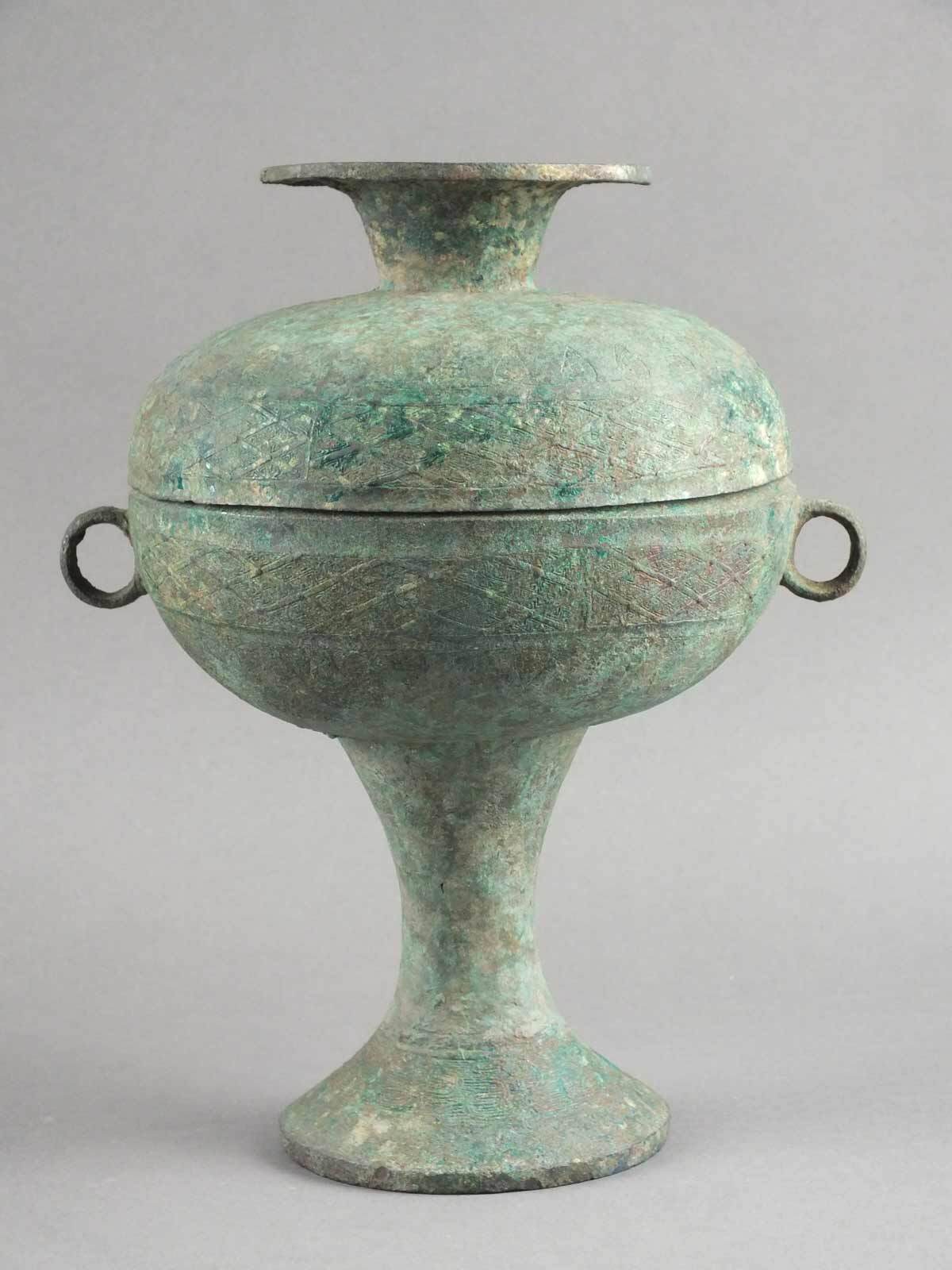Collection
Chinese Art
PEM’s Chinese collection celebrates the breadth and beauty of China’s diverse arts.

PEM’s Chinese art collection, the oldest in the United States, represents a rare and outstanding breadth of arts and objects of daily life from China.
PEM’s collection of Chinese art and culture started when Salem merchants first made contact with China, with the earliest objects received shortly after the East India Marine Society was founded in 1799.
Notable holdings include textiles, ceramics, other decorative arts, early photography, sculptures, prints, calligraphy, and paintings, including two imperial portraits. An array of Chinese textiles emphasizes the importance of silk, both for international trade and within Chinese society, from Qing dynasty (1644-1911) court robes to qipao (or cheongsam) dresses illustrating urban Chinese women’s fashions in the first half of the 20th century. The collection also includes examples of contemporary Chinese art that reflect global and cross-cultural trends.
PEM is the home of Yin Yu Tang, a late-18th-century merchant’s home from China’s Anhui Province that was re-erected in Salem in 2003. Yin Yu Tan - translated as “Hall Plentiful Shelter” - was home to the Huang family for eight generations, until 1982. The home reveals the Huizhou region’s unique architectural style and the many cultural changes that occurred in China throughout the home’s history. Stepping inside provides a new way for museum visitors to appreciate Chinese art and culture.
Highlights from this collection

ON VIEW
Augustus the Strong’s covered vase, 1710–15
On view in the Sean M. Healey Family Gallery of Asian Export Art.

ON VIEW
Lidded ritual grain container with lozenges and scrolls, 6th–5th century B.C.E.
On view in Double Happiness: Celebration in Chinese Art

Empress Xiaoxian, 1777
Ignatius Sichelbarth (Ai Qimeng, 1708–1780, Bohemia), Yi Lantai (active about 1748–86, China), and possibly Wang Ruxue (active 18th century, China), Empress Xiaoxian, 1777, with repainting possibly in the 19th century. Hanging scroll; ink and color on silk. Gift of Elizabeth Sturgis Hinds, 1956. E33619.

Pair of tribute bearers, late 18th century
Artists in Beijing, China, Pair of tribute bearers, late 18th century. Wood, ivory, mother of pearl, and cloisonné. Museum purchase, made possible by an anonymous donor, 2001. E301906.1–2.

Desk and dressing table on stand, mid-18th century
Artists in Guangzhou, China, Desk and dressing table on stand, mid-18th century. Ivory, zitan (red sandalwood), and metal. Museum purchase, made possible by an anonymous donor, 1985. E74137.

Second-degree Daoist priest’s robe, 18th century
Artists in China, Second-degree Daoist priest’s robe, 18th century. Silk, embroidered silk, and gold-wrapped thread. Museum purchase, made possible by an anonymous donor, 2003. E302178.

Six-panel wall hanging, 1736–1795
Imperial Silk Manufactory, Suzhou, China, Six-panel wall hanging, 1736–95. Embroidered and appliquéd silk. Gift of the estate of William F. Spinney, 1933. E21773.A-F. Photo by Dennis Helmar.

Headdress, about 1800
Artists in China, Headdress, about 1800. Kingfisher feathers, imitation pearls, coral, semiprecious stones, copper alloy with gilding, and silk threads. Gift in honor of Mr. and Mrs. Austin Cheney by their daughters, Ruth C. Krumbhaar, Marjorie B. C. Shaw, Elizabeth C. Buckley, and Mabel C. Smith, 1991. E75225.A.

Augustus the Strong’s covered vase, 1710–15
Artists in Jingdezhen, China, Augustus the Strong’s covered vase, 1710–15. Porcelain. Museum purchase, made possible by an anonymous donor, 2001. AE85782.AB. Photo by Dennis Helmar.
On view in the Sean M. Healey Family Gallery of Asian Export Art.

Jesus, Mary, and Joseph, early to mid-20th century
Lu Hongnian (John Lu, 1914–1989, China), Jesus, Mary, and Joseph, early to mid-20th century. Ink and color on paper. Museum purchase, made possible by the Asian Art Visiting Committee, 2003. E302067.

Stool, 2006
Shi Jianmin (born 1962, China), Stool, 2006. Stainless steel. Gift of the artist, 2008. E303674.
On view on the Ground Level of the New Wing stairwell.

Snuff bottle, 1750-95
Imperial Studios, Beijing, Snuff bottle, 1750-95. Enamel on copper with ivory stand. Museum purchase, made possible by an anonymous donor, 1988. E82696.A–C. Photo by Barabara Kennedy.

Lidded ritual grain container with lozenges and scrolls, 6th–5th century B.C.E.
Artists in China, lidded ritual grain container with lozenges and scrolls, Eastern Zhou dynasty, Spring and Autumn period, 6th–5th century B.C.E. Cast bronze. Gift of Francis Lee Higginson Jr., 1971. E46998.
On view in Double Happiness: Celebration in Chinese Art

Bed cover, mid to late 20th century
Junxiu (life dates unknown, China), Bed cover, mid to late 20th century. Hand-pieced and quilted fabric scraps. Museum purchase, 2008. E303846.

Loans and acquisitions
PEM is committed to providing the broadest possible access to its collection through the loan of objects for educational and scholarly purposes. Learn how to request a loan from the museum’s collection.
Keep exploring
Blog
Stories of opulence and influence
5 min read

Exhibition
Asian Export Art
Ongoing

Blog
The Huang Legacy
6 min read

Blog
Out of the shadows, into the light
5 min read
